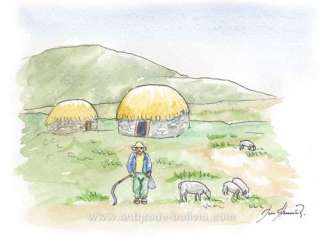

The Bolivian Population
As in many other countries of Latin America, the arrival of
Spanish colonists caused, as time goes by, a certain number of population
interbreeding and a mix of influences. That led to the huge ethnic diversity the country has now.
Bolivia is, with Peru, one of the South
American country that has the most important proportion of indigenous
population: 60% are Quechua or Aymara.
Since the 70’s and 80’s, these populations have organized
themselves a lot in order to vindicate their rights (the abolition of slavery
was not until the 1952’s revolution…).
Warning: it is to know that the Spanish term “indio”
is very negatively connoted and is often understood as an affront.
Despite the important indigenous presence, a white elite, coming
from the Spanish colony, still has the stranglehold on the country’s affairs.
The assumption of power of Evo Morales, first indigenous President of Bolivia
and in Latin America has, to some extent, changed this status quo. A new policy
direction is proposed to the country and despite everything, the world of
finance and trade still in the hands of the white minority.
Between these two opposites, we have a very small minority of
African black population, descendants of slaves brought from Africa, Asiatic
emigrants (mainly Chinese) and some European groups, emigrated next to the
World War II (Germans, Austrians, Italians), as well as Metis communities,
resulting from the population mix.
This ethnic and cultural diversity is a great
richness: cultural mixing (dances, art, gastronomy, literature, handicraft…)
represent a plural identity and a permanent movement. At the same time, it
represents an important weakness for the country, where blockages, social and
economic conflicts take turns and proliferate.



